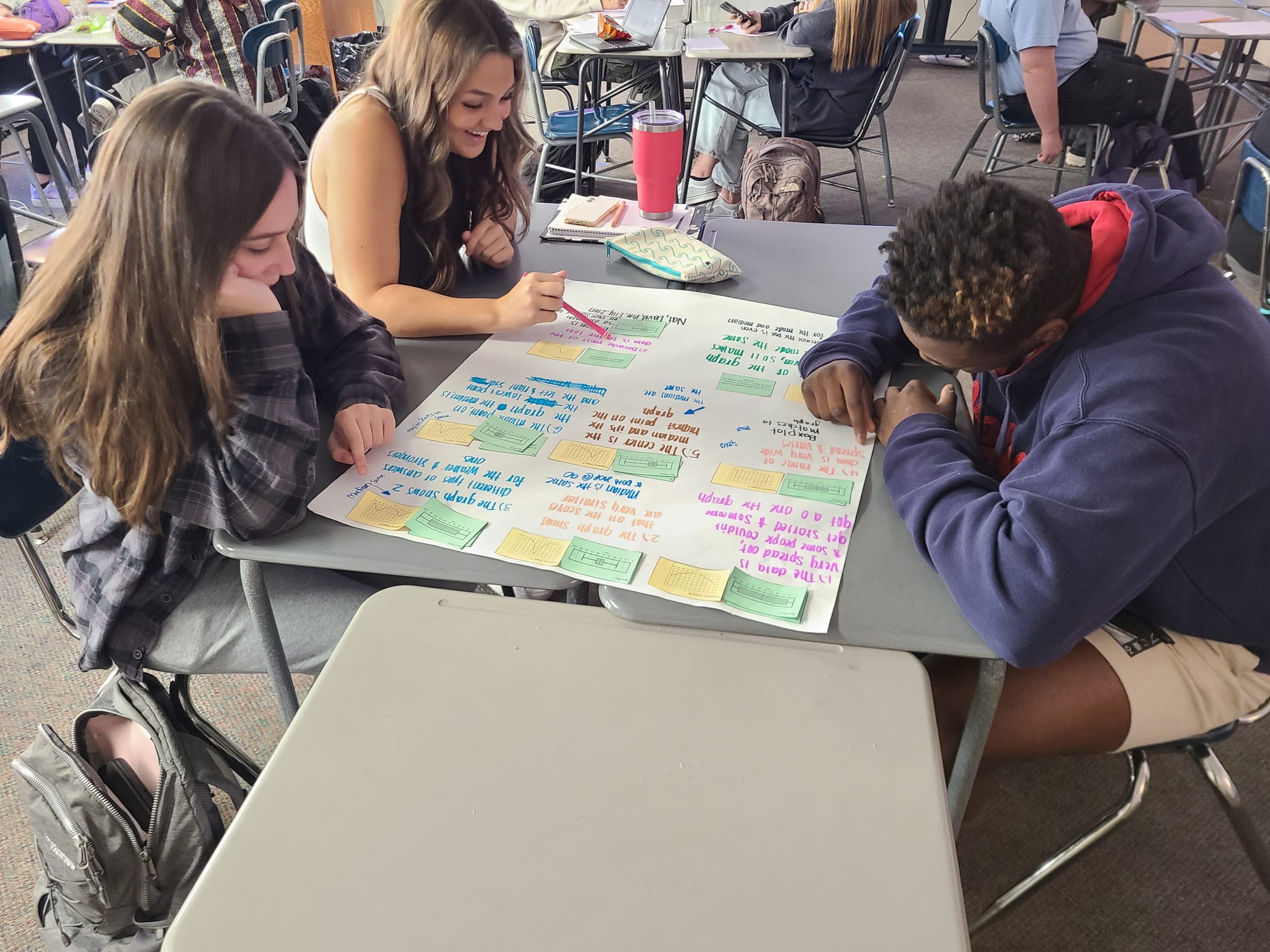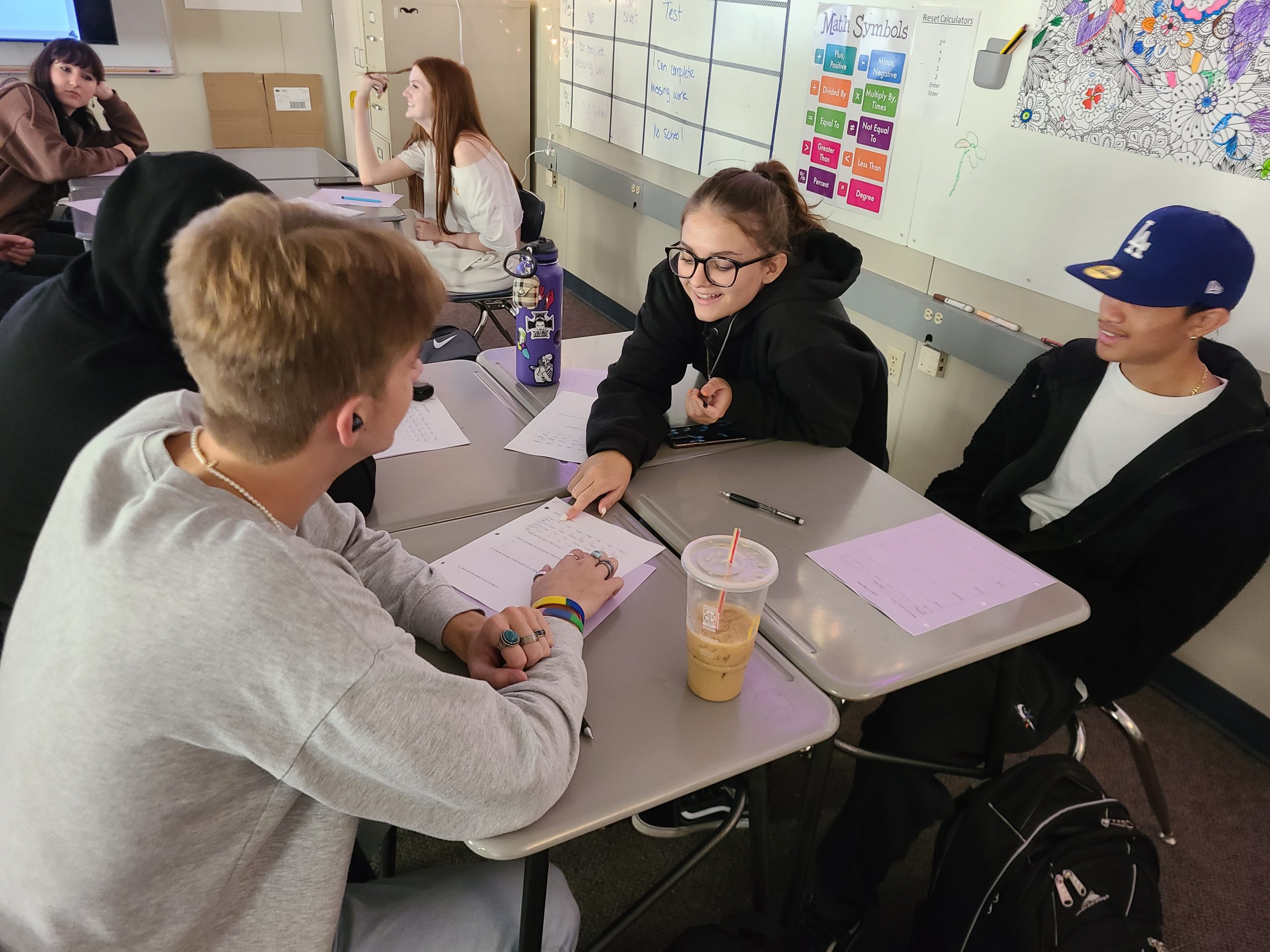
Several years ago, Coretta Hoffman, assistant principal at Mead High School and a former math teacher, found herself searching for a way to support students who struggled with math to get the skills and confidence they needed to succeed at two- and four-year colleges.
After various attempts to develop a hands-on math curriculum, she and her colleagues found one that worked: Bridge to College. Hoffman piloted the course during the 2014-2015 school year and subsequently became a trainer.
“Students who had previously struggled in math were like, ‘I get it. Math makes sense to me,’” Hoffman said. “Everything is very hands on, applicable. That’s the part I got excited about. Kids who saw themselves as not being able to succeed in college because of math grew their skills and confidence.”
There are now 115 districts (188 high schools) around the state that offer Bridge to College math or a similarly-structured Bridge to College course for English. Statewide, high school seniors who earn a B grade or above in a Bridge to College course are eligible for automatic placement into an appropriate college-level math and/or English course any Washington community and technical college and Eastern Washington University.

Placing directly into college-level math enables students to begin earning credit immediately, raising the likelihood that they will ultimately complete their education and earn a degree or other credential.
In the Mead district, implementing the Bridge to College math curriculum has driven strong collaboration between the K-12 and two-year college system, including a shared understanding of the math course students should start with once they begin their post-high school education journey.
The result: more Mead students start college-level math right out of high school, and students are more accurately placed in the college math course that’s right for them.
“Relationships have helped in building the communities of practice,” Hoffman said. “Higher ed and K-12 teachers observe each other, talk about what they see.” Community colleges are also using some Bridge to College lessons, which further smooths students’ experience transitioning into college math.
Jim Brady, vice president of learning at Spokane Falls Community College, affirmed the value of the collaboration happening between the K-12 and community college systems in the Spokane area. An educator for more than 30 years, he has been motivated throughout his career to find better ways to teach math.
“A large majority of community college students end up in developmental (pre-college) math. And often students don’t come out of those developmental classes,” Brady said, leaving students without a post-high school credential. “Bridge to College math established a means that has staying powers by which a student could affirm their college-level placement while still in high school.”
Brady estimates that two-thirds to three-quarters of students who attend SFCC after placing into college-math via Bridge to College are doing well.
And because of the relationships that are in place, the high school can easily receive feedback from SFCC about placement decisions that are not working out and make adjustments to high school course work.
Brady and Hoffman both offered advice to schools considering Bridge to College math courses.
“Give it a fair shake. The first year is going to be hard. It does take a significant amount of prep time because it is so hands on. The teacher you select to teach it has to believe in students’ ability to do math, and to allow them to go a little sideways,” Hoffman said. “The class demands digging in, getting kids thinking, making connections. It’s the most active class I ever taught.”
For rural schools, Hoffman appreciated the Bridge to College Communities of Practice that support teachers by connecting schools and teachers to share strategies and resources to get a Bridge to College effort going.
“You have got to have the community,” Brady said, “because it is so hard to build systems between K-12 and higher education. Build communities and habits of practice.”
Students and educators can learn more at https://bridgetocollegecourses.org/.